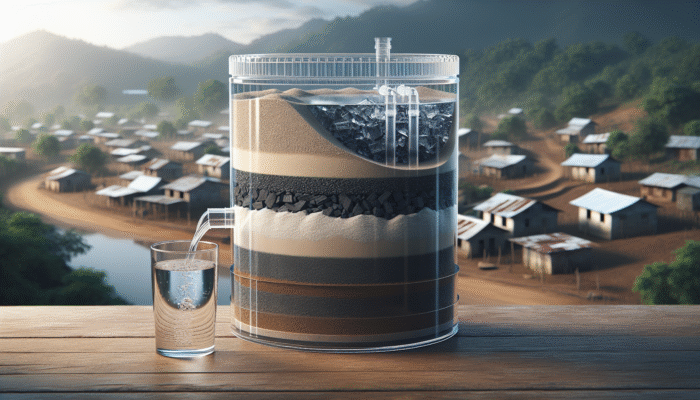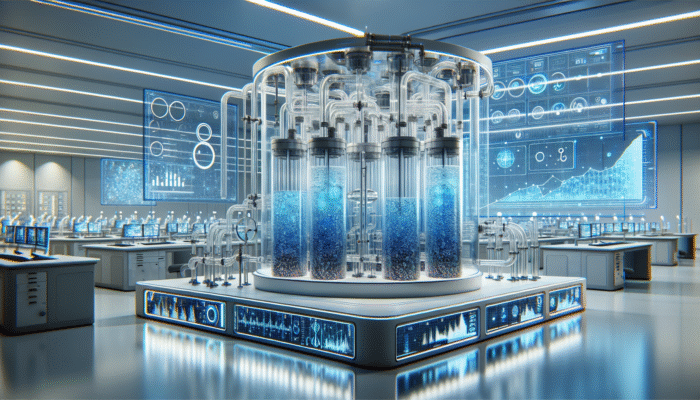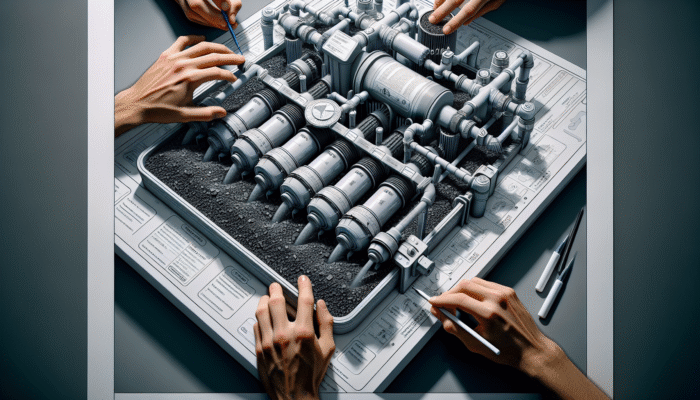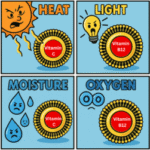Master DIY Water Filtration Techniques for Effortless Access to Clean Water
Comprehensive Instructions for Crafting Your Own Sand and Charcoal Water Filter

Designing a straightforward yet impactful water filtration system using sand and charcoal represents an innovative approach to significantly enhance water quality. This filtration technique is not only remarkably accessible but also utilises minimal materials, making it ideal for diverse settings, particularly in rural communities. Such communities stand to benefit immensely from improved access to clean drinking water, a crucial element for sustaining health and overall well-being. By adopting this filtration system, individuals can guarantee a dependable source of safe water for their families and broader communities, thereby fostering a healthier environment.
To initiate the construction of this filtration system, select a clean container, such as a bucket or a sizable plastic bottle. Begin by layering small stones or gravel at the bottom, which will aid in proper drainage and prevent clogging. Next, introduce a layer of activated charcoal, renowned for its ability to adsorb pollutants, eliminate odours, and filter out harmful chemicals. Following this, add a layer of fine sand to effectively capture larger particulates. Finally, cap it off with an additional layer of gravel to ensure the sand remains intact and does not wash away during the filtration process, ultimately helping to maintain the filter's efficiency over time.
Once your filter is fully assembled, pour unfiltered water into the container and allow it to percolate through the layers. As the water descends, impurities will be trapped, leading to visibly clearer water. However, it is vital to acknowledge that while sand and charcoal filters can substantially reduce contaminants, they may not eliminate all pathogens. To ensure the water is completely safe for consumption, it is advisable to augment this filtration method with additional purification techniques, such as boiling or chemical treatments, thereby enhancing safety and providing peace of mind.
Enhancing Water Clarity Using Ceramic Pot Filtration Techniques
The utilisation of ceramic pots for water filtration is a time-honoured technique that has effectively served numerous cultures globally. This method exploits the porous nature of ceramics to filter out harmful bacteria and sediments from water, thus making it particularly beneficial in regions where access to advanced water purification systems is limited. By employing this technique, communities can enjoy a sustainable and cost-effective solution for accessing cleaner water, which is essential for their health and wellbeing.
To create an effective ceramic pot filter, begin by sourcing a clay pot designed for water storage, typically available at local markets. The porous ceramic material acts as a natural filtration barrier, allowing water to seep through while capturing larger particles and harmful microorganisms. This method is not only economically viable but also promotes sustainability, as ceramic pots can be reused for many years with proper maintenance and care, thereby continually providing improved access to water quality for those who depend on it.
For optimal results, regular maintenance of the ceramic filter is crucial. Routine cleaning is necessary to prevent the buildup of contaminants, which can compromise water quality. This can be accomplished easily by scrubbing the exterior with a brush and allowing the pot to dry in sunlight, which assists in eliminating any remaining pathogens. By adopting this straightforward yet effective filtration method, communities worldwide can significantly enhance their access to clean drinking water without the need for complex technologies or expensive systems.
Streamlined Water Filtration Using Cloth: A Practical Solution
Employing a piece of cloth as a water filtration method is a swift and efficient technique that has been utilised for centuries. This method is particularly effective for removing larger particles such as dirt, sand, and debris, making it an ideal initial step in the comprehensive water purification process. It exemplifies the ingenuity of using everyday materials to substantially elevate water quality in diverse scenarios, ranging from outdoor adventures to emergency situations.
To implement this technique, choose a clean, fine cloth, such as cheesecloth or a cotton handkerchief. Position the cloth over a clean container or bucket and gradually pour the unfiltered water through it. As the water flows through the fabric, larger impurities are trapped, resulting in noticeably clearer water. This method is especially advantageous for hikers, campers, and individuals facing emergency situations, who require rapid water purification solutions that can be executed with minimal resources.
It is critical to keep in mind that while cloth filtration effectively eliminates visible contaminants, it does not eradicate microorganisms that can pose health risks. Therefore, it should be complemented with additional purification methods, such as boiling or chemical treatments, to guarantee the water's safety for drinking. This straightforward yet clever approach underscores the potential of utilising commonplace materials to significantly improve water quality, showcasing how simple solutions can have substantial impacts on health and well-being.
Effective Strategies for Enhancing Water Filter Efficiency

Boosting Water Filtration Effectiveness with Coffee Filters
If you aim to enhance the efficiency of your water filtration system, integrating coffee filters as a preliminary filtering step can yield significant improvements. These easily accessible filters are specifically designed to capture fine particles, thereby enhancing the overall cleanliness and quality of the water collected. This additional layer of filtration is a strategic method to ensure cleaner water and optimise your filtration process.
To utilise coffee filters effectively, position them over your existing filtration system—be it a DIY sand filter or a ceramic pot setup. By pouring water through the coffee filter first, you can eliminate smaller particles that might otherwise clog the main filtration layer. This extra step not only contributes to achieving cleaner water but also extends the lifespan of your primary filter components, making it a smart and practical addition to any filtration setup.
This method proves particularly beneficial for outdoor enthusiasts who may encounter muddy or sediment-heavy water sources. By pre-filtering the water, you ensure that your more advanced filters remain functional for a longer duration, thereby maintaining their effectiveness. Furthermore, coffee filters are lightweight and portable, making them an ideal inclusion in any camping or hiking gear, allowing adventurers to consistently access clean drinking water while reducing the risk of contamination.
Enhancing Filtration Quality with Activated Carbon
Incorporating activated carbon into your water filtration system stands out as one of the most effective water filter hacks currently available. Activated carbon is renowned for its exceptional ability to adsorb impurities, odours, and harmful chemicals, making it a powerful ally in the quest for clean drinking water. Its versatility and efficiency render it an invaluable component of numerous filtration systems, markedly enhancing the overall quality of water.
When integrating activated carbon, the process is straightforward. Simply layer it within your existing filtration setup, perhaps interspersed between layers of sand and gravel. As water flows through, the activated carbon diligently traps contaminants, improving both the taste and smell of the water. This method not only proves effective but also sustainable, as activated carbon can be regenerated through simple rinsing techniques, allowing for prolonged use without the need for constant replacement.
Communities grappling with challenges stemming from industrial pollution or agricultural runoff can particularly benefit from activated carbon filtration. By employing this method, individuals can significantly reduce harmful substances in their water supply, leading to a healthier living environment. This powerful hack illustrates how accessible materials can drastically enhance the safety and quality of drinking water, benefiting both individuals and entire communities alike.
Recognising the Importance of Regular Filter Maintenance

To ensure the long-term effectiveness of your water filtration system, regular maintenance is essential. Neglecting to care for your filters can lead to decreased performance, potential contamination, and health risks associated with unsafe drinking water. By prioritising maintenance, users can significantly enhance the efficacy and longevity of their filtration systems, ensuring ongoing access to clean water.
Begin with a routine inspection of your filter components, checking for any signs of wear, clogs, or damage that may compromise functionality. Cleaning intervals may vary depending on the type of filter you employ; however, a general guideline is to clean or replace components every few weeks. For instance, when using a sand and charcoal filter, periodically replacing the charcoal and rinsing the sand can help maintain optimal filtration efficiency and guarantee safe drinking water.
Educating users about the significance of maintenance is crucial, especially in communities that rely on these methods for safe drinking water. Regular upkeep not only extends the filter's lifespan but also assures users of the quality of the water they consume. By emphasising the importance of proper maintenance, individuals can empower themselves and their communities to enjoy cleaner, safer water for years to come, fostering a culture of responsibility and awareness regarding water quality.
Natural Approaches to Water Purification
Implementing Solar Water Disinfection Techniques for Safe Drinking Water
Harnessing the natural power of the sun through solar water disinfection (SODIS) offers a simple yet effective method for purifying water. This technique utilises UV radiation to eliminate harmful pathogens, making it a viable option for individuals living in sunny regions or during outdoor adventures. By leveraging renewable energy, SODIS provides an environmentally friendly approach to achieving water purification.
To implement SODIS, fill clear bottles with contaminated water and position them in direct sunlight for a minimum of six hours. The UV rays penetrate the water, effectively neutralising harmful microorganisms that pose health threats. This method is not only energy-efficient but also cost-effective, requiring minimal resources beyond sunlight and clean containers, thus making it accessible to communities across the globe.
Solar water disinfection serves as an accessible solution for communities lacking reliable access to clean water. For instance, in areas affected by natural disasters or those with limited infrastructure, SODIS can act as a lifesaver. By promoting awareness of this technique, individuals can significantly improve their water quality using just the sun's energy, thereby fostering better health outcomes and resilience in vulnerable communities worldwide.
Boiling Water: The Tried-and-True Method for Ensuring Purity
Boiling water remains a time-tested method for ensuring its purity, effectively killing bacteria, viruses, and parasites that can jeopardise health. This universally recognised technique can be applied in various settings, making it an essential method for anyone seeking clean drinking water, particularly during emergencies or while travelling in remote areas where clean water is scarce.
To purify water through boiling, bring it to a rolling boil for at least one minute. At elevations above 6,500 feet, extend the boiling time to three minutes to ensure all pathogens are effectively eliminated. This method proves especially useful when access to advanced filtration systems is limited, offering a reliable option for securing safe drinking water.
While boiling is effective, it’s essential to allow the water to cool before consumption. Additionally, boiling does not remove chemical contaminants, so it’s best used alongside other filtration methods for comprehensive safety. This straightforward yet powerful approach to water purification underscores the importance of utilising accessible techniques in the quest for clean and safe drinking water for all individuals.
Exploring Plant-Based Solutions for Water Purification
Investigating the use of specific plants for natural water purification offers an innovative perspective in the realm of water filter hacks. One particularly notable example is Moringa seeds, which possess coagulating properties that effectively clarify water. This method harnesses the power of nature to provide sustainable solutions to water quality challenges faced by many communities.
When crushed and mixed with contaminated water, Moringa seeds release natural coagulants that bind to impurities and bacteria, causing them to settle at the bottom of the container. After allowing the mixture to stand for several hours, the clearer water can be siphoned off for drinking. This method is not only effective but also promotes sustainability, supporting environmental health while significantly improving water quality for those who depend on it.
Communities in tropical regions where Moringa trees are abundant can greatly benefit from this plant-based solution. By educating residents on how to utilise Moringa seeds for water purification, communities can reduce their reliance on conventional filtration methods and promote practices that are both environmentally friendly and effective. This approach showcases the potential of integrating local natural resources into water purification strategies.
Portable Water Filtration Solutions Designed for Travellers
LifeStraw: Your Essential Portable Water Filter for Adventurous Journeys
For outdoor enthusiasts and travellers, the LifeStraw has transformed portable water filtration. This compact, lightweight device enables users to drink directly from natural water sources while effectively removing harmful bacteria and parasites, making it an indispensable item for camping, hiking, and emergency preparedness. Its design prioritises convenience and safety, ensuring that clean water is always accessible during your adventures.
To use the LifeStraw, simply place the straw into any water source and sip as you would with a regular straw. The advanced filtration technology effectively eliminates 99.9999% of waterborne bacteria and 99.9% of parasites, ensuring that the water is safe for consumption. This feature is particularly advantageous in remote areas where clean water is scarce, allowing users to remain hydrated without compromising their health.
Beyond its functionality, the LifeStraw also underscores sustainability. Many models come equipped with reusable filters that can last for thousands of litres of water, significantly reducing plastic waste in the environment. By incorporating this innovative tool into your outdoor gear, you can relish the beauty of nature while having peace of mind regarding your water quality, knowing that you have a reliable source of safe drinking water readily available at your disposal.
Gravity-Based Water Filters: A Dependable Solution for Purification
Gravity-based water filters present a practical solution for portable water purification without the need for electricity. These systems utilise the natural force of gravity to filter water, making them ideal for camping trips, remote locations, or emergency situations where power sources are unavailable. By harnessing this straightforward principle, these filters make safe drinking water accessible to everyone, regardless of their environment.
The setup is uncomplicated: fill the upper chamber with unfiltered water and allow it to flow through the filter element into the lower chamber. The gravity mechanism handles the work, ensuring that contaminants are effectively removed as the water passes through the filtration media. This method is not only efficient but also user-friendly, requiring no additional power sources, thus making it perfect for outdoor use.
Communities in areas with unreliable electricity can particularly benefit from gravity-based filters. By providing a trustworthy means of water purification, these systems enhance access to safe drinking water and promote healthier living conditions. Whether for personal use or community initiatives, gravity-based filters exemplify how straightforward technology can address global water challenges, ensuring that everyone has access to clean and safe water.
Convenient Bottle Filters: The Ultimate Travel Companion
Bottle filters serve as an ideal travel companion, providing a convenient method to access clean water while on the go. These portable filtration systems integrate directly into water bottles, ensuring that travellers can hydrate safely, regardless of their destination. Their ease of use and practicality make them a preferred choice for adventurers and city dwellers alike who prioritise their health and hydration.
Most bottle filters incorporate advanced filtration techniques, such as activated carbon and hollow fibre membranes, to effectively eliminate impurities and contaminants. Whether you’re hiking through a national park or navigating urban environments, these bottles provide peace of mind by ensuring access to safe drinking water. This convenience is crucial for maintaining hydration and health while on the move, particularly in areas where water quality may be questionable.
Moreover, bottle filters contribute to environmental sustainability by reducing the need for single-use plastic bottles. By opting for a reusable bottle with a built-in filter, travellers can significantly lessen their environmental impact while enjoying clean water wherever their journeys take them. This combination of convenience and eco-friendliness illustrates how innovative solutions can enhance our travel experiences while promoting responsible consumption and environmental stewardship.
Portable UV Water Purifiers: Instant Safety for Your Water
Portable UV water purifiers have emerged as a revolutionary breakthrough in the domain of water filter hacks, providing an effective and convenient means to ensure water safety. These devices utilise ultraviolet light to eradicate bacteria and viruses, making them essential tools for outdoor adventurers and international travellers alike who require safe drinking water on the go. Their compact design and ease of use make them invaluable for those prioritising health and safety during their travels.
To operate a portable UV purifier, simply fill a clean container with water and immerse the UV lamp. The device emits UV light, which penetrates the microorganisms in the water, rendering them inactive and safe for consumption. The process typically takes only a few minutes, allowing for quick access to purified water whenever needed. This efficiency is crucial for individuals who may need to purify water during extended outdoor activities or while travelling in areas with questionable water quality.
What’s particularly advantageous about UV purifiers is their lightweight design and straightforward operation. They require no chemical treatments or extensive setup, making them perfect for individuals on the move. However, it is essential to ensure that the water is clear before treatment, as turbidity can hinder the effectiveness of UV light. This innovative solution empowers users to enjoy clean water while minimising their environmental footprint, highlighting the importance of accessible water purification technologies in today’s world.
Hand Pump Filters: Essential Gear for Safety on the Trail
Hand pump filters are indispensable for backpackers seeking safe drinking water directly from natural sources. These portable filtration systems enable users to pump water through a filter, effectively removing contaminants and ensuring that the water is safe for consumption. Their design focuses on convenience and reliability, making them essential for outdoor adventures where access to clean water is critical.
Utilising a hand pump filter is straightforward and intuitive. By inserting the intake hose into a stream, river, or lake, users can manually pump water through the filtration system. The hand pump mechanism efficiently eliminates impurities and pathogens, granting immediate access to clean drinking water. This method is particularly valuable when travelling through regions where water sources may be contaminated or unreliable, ensuring that adventurers can stay hydrated without compromising their health.
Many hand pump filters are lightweight and compact, making them easy to transport in backpacks. Additionally, they often come with replaceable filter cartridges, ensuring long-term usability and effectiveness. By incorporating this practical solution into their gear, backpackers can enjoy their adventures while ensuring access to safe, potable water, which is essential for maintaining health and energy during outdoor activities.
Advanced Water Filtration Techniques to Elevate Purity Levels
Comprehensive Water Purification with Reverse Osmosis Systems
Reverse osmosis (RO) systems epitomise one of the most sophisticated water filtration technologies available today. Capable of eliminating a wide array of contaminants, including dissolved solids, heavy metals, and microorganisms, RO systems are powerful tools for ensuring water quality. Their effectiveness makes them a popular choice for households and communities that prioritise safe drinking water, especially in regions grappling with water pollution concerns.
The reverse osmosis process entails forcing water through a semi-permeable membrane that permits only clean water molecules to pass through. This method effectively removes various impurities, supplying users with high-quality drinking water that complies with health standards. RO systems are particularly advantageous in areas with elevated pollutant levels or for households concerned about water quality, ensuring consistent access to safe and potable water for families.
While these systems are highly effective, they necessitate regular maintenance and filter replacements to ensure optimal performance. Additionally, users should be aware that RO systems can waste a significant amount of water during the filtration process, which is an important consideration for those residing in water-scarce regions. By understanding the benefits and limitations of reverse osmosis, individuals can make informed decisions regarding their water filtration needs and ensure the health and safety of their families.
Utilising Ion Exchange Technology for Effective Water Softening
Ion exchange technology represents another advanced filtration method that effectively softens water and removes harmful ions, such as lead and nitrates. This process is particularly advantageous for individuals living in areas with hard water, which can lead to scale buildup and decreased efficiency in household appliances. By understanding this technology, users can significantly improve their water quality and safeguard their home investments from damage caused by hard water.
In an ion exchange system, water flows through a resin bed containing charged ions. As water passes through, undesirable ions are exchanged for harmless ones, effectively softening the water and enhancing its quality. This method can drastically improve the taste of drinking water and prevent damage to plumbing fixtures and appliances, which can lead to costly repairs and replacements over time.
While ion exchange systems are primarily utilised for water softening, they can also be combined with other filtration methods to provide comprehensive water treatment solutions. Understanding the benefits of ion exchange technology helps users appreciate the value it brings to their overall water quality management, ensuring families have access to safe, pleasant-tasting water that positively contributes to their health and well-being.
Leveraging Ultraviolet Sterilisation for Chemical-Free Water Disinfection
Employing ultraviolet (UV) sterilisation as a method for disinfecting water has gained traction due to its effectiveness and chemical-free nature. UV sterilisation operates by exposing water to UV light, which disrupts the DNA of harmful microorganisms, rendering them incapable of reproduction and effectively eliminating their threat. This method is particularly beneficial in areas where chemical disinfection methods are less desirable due to potential byproducts that can harm health.
UV sterilisation necessitates minimal maintenance and can be employed alongside other filtration systems to enhance overall results. To effectively use UV sterilisation, water must first be clarified to eliminate turbidity, which can obstruct UV light. Once the water is clear, it can be treated with a UV purifier, ensuring access to safe drinking water. This method aligns with the growing demand for environmentally friendly water purification solutions, leveraging the power of light to protect health and safety in communities worldwide.
Encouraging Sustainable Practices in Water Filtration
Promoting Reusable Filter Materials to Minimise Environmental Impact
In the pursuit of sustainable living, opting for reusable filter materials is a significant step towards reducing waste in water filtration practices. Many conventional water filters are designed for single use, resulting in substantial plastic and material waste that contributes to environmental degradation. By advocating for the use of reusable materials, individuals can take proactive steps in environmental conservation efforts while ensuring access to clean water.
Utilising materials such as cloth, ceramic, or specific types of activated carbon significantly decreases environmental impact. These materials can be easily cleaned and maintained, allowing for long-term use without compromising filtration effectiveness. By embracing sustainable filtering practices, individuals and communities can improve their water quality while contributing to broader environmental conservation efforts, fostering a culture of sustainability and responsibility.
Communities can promote the use of reusable filters through educational initiatives that highlight their benefits. Encouraging individuals to adopt sustainable filtering practices not only enhances personal water quality but also contributes to broader environmental conservation efforts. Embracing reusable filter materials illustrates how small changes can lead to significant impacts on both personal health and the planet, creating a more sustainable future for everyone.
Implementing Rainwater Harvesting Systems for a Sustainable Water Supply
Integrating rainwater harvesting systems with filtration methods provides a sustainable source of clean water for households. This practice has gained traction globally, especially in regions experiencing water scarcity or where municipal water supply is unreliable. By harnessing natural resources, communities can enhance their water independence and resilience, providing a dependable water source for various needs.
To establish a rainwater harvesting system, install a collection apparatus that captures rainwater from rooftops or other surfaces. This water is then channelled into storage tanks or cisterns for future use. Basic filtration methods, such as sediment filters, can be employed to ensure that the collected rainwater is safe for drinking or other household applications. This approach not only provides a reliable source of clean water but also promotes sustainability and conservation by maximising the use of available resources.
Communities in both urban and rural settings can benefit from rainwater harvesting by securing a reliable and sustainable water source. By advocating for rainwater harvesting systems, individuals can enhance their water independence, reduce reliance on municipal supplies, and contribute to environmental sustainability, ensuring access to clean water for future generations and fostering community resilience.
Participating in Community-Based Filtration Projects for Collective Improvement
Engaging in community-based filtration projects can significantly enhance access to clean water for larger groups, fostering collaboration and empowerment among residents. These initiatives often unite local individuals to develop sustainable filtration solutions tailored to their specific needs, effectively addressing communal water challenges and enhancing overall public health.
Community filtration projects can range from constructing shared filtration systems to organising educational workshops that teach residents effective water purification techniques. These collaborative efforts not only enhance access to clean water but also build community resilience and cohesion, empowering individuals to take charge of their water quality challenges and create enduring solutions.
By involving community members in the planning and implementation of filtration projects, partnerships can be formed that foster empowerment and ownership. As communities collaborate to tackle their water challenges, they can generate lasting solutions that benefit everyone involved, thereby contributing to improved public health and well-being while reinforcing the significance of collective action in achieving clean water access.
Innovative Solar-Powered Filtration Units for Sustainable Water Access
Utilising solar energy to power filtration units represents a progressive approach to sustainable water purification. Solar-powered filters harness renewable energy to operate, thereby reducing reliance on non-renewable resources and minimising environmental impact. This innovative solution aligns with the global push towards sustainability and responsible resource management.
These systems typically combine solar panels with advanced filtration technology, providing a constant and reliable source of clean water. Communities in sunny regions can particularly benefit from this approach, as solar energy can be effectively harnessed to support water purification efforts. By promoting solar-powered filtration units, communities can enhance their water independence and improve overall health outcomes, ensuring that access to clean water is a reality for everyone.
As technology continues to evolve, the integration of solar energy in water purification will be crucial in addressing global water challenges. Advocating for solar-powered filtration units can lead to greater water access in remote areas where energy resources may be scarce. This emphasis on innovative solutions underscores the importance of sustainable practices in ensuring safe drinking water for all and fostering community resilience in the face of water scarcity.
Frequently Asked Questions About Efficient Water Filtration
What are some straightforward DIY water filtration methods I can implement?
Some easy DIY water filtration techniques include sand and charcoal filters, ceramic pot filtration, and cloth filtration. These strategies utilise accessible materials to effectively remove impurities from water, providing straightforward solutions for cleaner drinking water that can be implemented by anyone.
How can I enhance the efficiency of my water filter?
You can boost your water filter's efficiency by using pre-filters like coffee filters, incorporating activated carbon, and ensuring regular maintenance of your filtration system. Consistent upkeep will maintain optimal performance and enhance the safety of your drinking water.
Is boiling water a reliable method for purification?
Yes, boiling water is a highly effective purification method, as it kills harmful bacteria and viruses. It’s a dependable technique suitable for emergency situations and outdoor activities, providing peace of mind regarding water safety in various environments.
What is solar water disinfection, and how does it function?
Solar water disinfection (SODIS) involves placing clear bottles of water in sunlight to leverage UV rays for eliminating pathogens. This method provides a simple yet effective approach to water purification that is accessible to many communities, particularly in sunny regions.
Are portable water filters worth the investment?
Yes, portable water filters are a valuable investment for travellers and outdoor enthusiasts, as they ensure access to safe drinking water from natural sources while reducing reliance on single-use plastic bottles, thereby promoting sustainability and environmental stewardship.
Can Moringa seeds effectively purify water?
Yes, Moringa seeds can purify water by releasing natural coagulants that bind to impurities, causing them to settle at the bottom. This eco-friendly method is effective for improving water clarity and serves as a sustainable solution for communities facing water quality challenges.
What advantages do reverse osmosis systems offer for water purification?
Reverse osmosis systems effectively remove a wide range of contaminants, including dissolved solids and microorganisms, providing high-quality drinking water. However, they require regular maintenance and can waste water, making it important to consider their use carefully in water-scarce regions.
How do gravity-based filters function for effective purification?
Gravity-based filters operate by utilising the natural force of gravity to allow water to flow through the filter media, effectively removing impurities without needing electricity. This makes them ideal for outdoor use and areas with limited resources, ensuring access to clean water.
Why is regular filter maintenance vital for water safety?
Regular filter maintenance is essential for ensuring optimal performance, preventing contamination, and extending the filter’s lifespan. This practice promotes safe drinking water and enhances the overall effectiveness of filtration systems, contributing to better health outcomes for users.
What actions can communities take to enhance access to clean water?
Communities can improve access to clean water by participating in community-based filtration projects, implementing rainwater harvesting systems, and advocating for sustainable filtration solutions that address local needs and challenges. Collaborative efforts can lead to significant improvements in public health and safety.
Explore our world on X!
The post Water Filter Hacks: Creative Tips for Purifying H2O appeared first on Survival Bite.
The Article Water Filter Hacks: Innovative Tips for Clean Water Was Found On https://limitsofstrategy.com

